Injection 3D Printing of Doubly Curved Ceramic Shells in Non-Synthetic Particle Suspensions
Abstract
:1. Introduction
2. Materials and Methods
2.1. Experimental Set-Up with Liquid Deposition Modeling System
- A single 3D doubly curved object is modeled.
- The object is oriented and sliced in two different ways, resulting in total of four unique printing paths.
- Each of the four printing paths is then executed in the two selected substrate mixtures S/WsI/W and RfC/WsI/W.
- The water content of the mixtures and the resulting drying behavior of the objects in mixtures is noted, observed, and adjusted.
- After complete drying, the objects are fired in a kiln at 1080 °C.
- Final objects
2.2. Kaolinite Clay Paste
2.3. Particle Suspensions
2.3.1. Initial Experiments
2.4. Digital Modeling Strategies
2.5. Injected 3D-Printed Clay and Sintering
2.5.1. Interlayer Bond Strength of Clay Samples in Green State
2.5.2. Three-Point Bending Test
2.5.3. Influence of Substrate on Layer Geometry
2.5.4. Additional Aspects
3. Results
4. Discussion
4.1. Limitations of the Used Technology
4.2. Modeling Effects
4.3. Differences between the Used Substrate Mixtures
5. Conclusions
Author Contributions
Funding
Institutional Review Board Statement
Informed Consent Statement
Data Availability Statement
Acknowledgments
Conflicts of Interest
References
- Moretti, F. WASP Launches the New Professional Clay Extruder. Available online: https://www.3dwasp.com/en/wasp-launches-the-new-professional-clay-extruder/ (accessed on 3 July 2024).
- Seibold, Z.; Hinz, K.; García del Castillo y López, J.L.; Martínez Alonso, N.; Mhatre, S.; Bechthold, M. Ceramic Morphologies, Precision and Control in Paste-Based Additive Manufacturing. In ACADIA 2018: Recalibration. On Imprecision and Infidelity, Proceedings of the 38th Annual Conference of the Association for Computer Aided Design in Architecture, Mexico City, Mexico, 18–20 October 2018; Anzalone, P., Del Signore, M., Wit, A.J., Eds.; Association for Computer Aided Design in Architecture (ACADIA), by the Universidad Iberoamericana: Mexico City, Mexico, 2018; pp. 350–357. ISBN 978-0-692-17729-7. [Google Scholar]
- Cruz, P.J.S.; Knaack, U.; Figueiredo, B.; de Witte, D. Ceramic 3D printing: The future of brick architecture. In Proceedings of the IASS Annual Symposium 2017—Interfaces: Architecture. Engineering. Science, Hamburg, Germany, 25–28 September 2017; Bögle, A., Grohmann, M., Eds.; HafenCity University Hamburg, International Association of Shell & Spatial Structures (IASS): Hamburg, Germany, 2017; pp. 1–10. [Google Scholar]
- Bechthold, M. Ceramic Prototypes—Design, Computation, and Digital Fabrication. Inf. La Construcción 2016, 68, e167. [Google Scholar] [CrossRef]
- Guilherme, P.; Ribeiro, M.J.; Labrincha, J.A. Behaviour of different industrial ceramic pastes in extrusion process. Adv. Appl. Ceram. Struct. Funct. Bioceram. 2009, 108, 347–351. [Google Scholar] [CrossRef]
- Nigay, P.M.; Sani, R.; Cutard, T.; Nzihou, A. Modeling of the thermal and mechanical properties of clay ceramics incorporating organic additives. Mater. Sci. Eng. A 2017, 708, 375–382. [Google Scholar] [CrossRef]
- Wang, S.; Toh, H.P.; Raspall, F.; Banon, C. Detailing the configuration to perform better clay printing. In RE: Anthropocene, Proceedings of the 25th International Conference of the Association for Computer-Aided Architectural Design Research in Asia (CAADRIA) 2020, Bangkok, Thailand, 5–8 August 2020; The Association for Computer-Aided Architectural Design Research in Asia (CAADRIA): Hong Kong, China, 2020; Volume 1, pp. 153–161. [Google Scholar]
- Seibold, Z.; Mhatre, S.; Alhadidi, S.; García del Castillo, J.L.; Bechthold, M. Janus Printing: Coextrusion based Multi-material Additive Manufacturing for Ceramics. In Proceedings of the Ubiquity & Autonomy: Proceedings of the 39th Annual Conference of the Association for Computer-Aided Design in Architecture (ACADIA), Austin, TX, USA, 24–26 October 2019. [Google Scholar] [CrossRef]
- Hergel, J.; Hinz, K.; Lefebvre, S.; Thomaszewski, B. Extrusion-Based Ceramic Printing with Strictly-Continuous Deposition. ACM Trans. Graph. (TOG) 2019, 38, 194. [Google Scholar] [CrossRef]
- Yang, H.-Q.; Klug, C.; Schmitz, T.H. Fiber-Reinforced Clay: An Exploratory Study on Automated Thread Insertion for Enhanced Structural Integrity in LDM. Ceramics 2023, 6, 1365–1383. [Google Scholar] [CrossRef]
- Ko, M.; Shin, D.; Ahn, H.; Park, H. InFormed Ceramics: Multi-Axis Clay 3D Printing on Freeform Molds. In Robotic Fabrication in Architecture, Art and Design 2018; Willmann, J., Block, P., Hutter, M., Byrnem, K., Schork, T., Eds.; Springer International Publishing: Cham, Switzerland, 2019; pp. 297–308. [Google Scholar] [CrossRef]
- Bechthold, M.; King, J.; Kane, A.; Niemasz, J.; Reinhart, C. Integrated Environmental Design and Robotic Fabrication Workflow for Ceramic Shading Systems. In Proceedings of the ISARC Proceedings, Seoul, Republic of Korea, 29 June–2 July 2011; pp. 70–75. Available online: https://www.iaarc.org/publications/proceedings_of_the_28th_isarc/integrated_environmental_design_and_robotic_fabrication_workflow_for_ceramic_shading_systems.html (accessed on 4 July 2024).
- Rosenwasser, D.; Mantell, S.; Sabin, J. Clay Non-Wovens: Robotic Fabrication and Digital Ceramics. In Proceedings of the ACADIA 2017: DISCIPLINES & DISRUPTION, Proceedings of the 37th Annual Conference of the Association for Computer Aided Design in Architecture (ACADIA), Cambridge, MA, USA, 2–4 November 2017; pp. 502–511, ISBN 978-0-692-96506-1. [Google Scholar] [CrossRef]
- Battaglia, C.A.; Miller, M.F.; Zivkovic, S. Sub-Additive 3D Printing of Optimized Double Curved Concrete Lattice Structures. In Robotic Fabrication in Architecture, Art and Design 2018; Willmann, J., Block, P., Hutter, M., Byrnem, K., Schork, T., Eds.; Springer International Publishing: Cham, Switzerland, 2019; pp. 242–255. [Google Scholar] [CrossRef]
- Design Research into the Possibilities of 3D Concrete Printed Facades. Neutelings Riedijk Architects. Available online: https://neutelings-riedijk.com/news/design-research-into-the-possibilities-of-3d-concrete-printed-facades/ (accessed on 4 July 2024).
- Shahzad, A.; Lazoglu, I. Direct ink writing (DIW) of structural and functional ceramics: Recent achievements and future challenges. Compos. Part B Engineering. 2021, 225, 109249. [Google Scholar] [CrossRef]
- Li, W.; Ghazanfari, A.; Leu, M.C.; Landers, R.G. Methods of Extrusion-On-Demand for High Solids Loading Ceramic Paste in Freeform Extrusion Fabrication. In Proceedings of the Solid Free-form Fabrication Symposium, Austin, TX, USA, 10–12 August 2015; Available online: https://www.researchgate.net/publication/304252577 (accessed on 4 July 2024).
- Leong, Y.; Teo, J.; Teh, E.; Smith, J.; Widjaja, J.; Lee, J.; Fourie, A.; Fahey, M.; Chen, R. Controlling attractive interparticle forces via small anionic and cationic additives in kaolin clay slurries. Chem. Eng. Res. Des. 2012, 90, 658–666. [Google Scholar] [CrossRef]
- Shi, J.; Cho, Y.; Taylor, M.; Correa, D. Guiding Instability: A craft-based approach for modular 3D clay printed masonry screen units. In Architecture in the Age of the 4th Industrial Revolution, Proceedings of the 37th eCAADe and 23rd SIGraDi Conference, Porto, Portugal, 11–13 September 2019; Pedro Sousa, J., Castro Henriques, G., Pedro Xavier, J., Eds.; Blucher: São Paulo, Brazil, 2019; pp. 477–484. [Google Scholar]
- Chen, Y.; He, S.; Zhang, Y.; Wan, Z.; Çopurŏglu, O.; Schlangen, E. 3D printing of calcined clay-limestone-based cementitious materials. Cem. Concr. Res. 2021, 149, 106553. [Google Scholar] [CrossRef]
- Sarila, V.; Koneru, H.P.; Pyatla, S.; Cheepu, M.; Kantumunchu, V.C.; Ramachandran, D. An Overview on 3D Printing of Ceramics Using Binder Jetting Process. Eng. Proc. 2024, 61, 44. [Google Scholar] [CrossRef]
- Ceramic 3D Printing with Binder Jetting Guide. Available online: https://www.desktopmetal.com/resources/ceramic-3dprinting-binder-jetting (accessed on 4 July 2024).
- Weger, D.; Gehlen, C. Particle-Bed Binding by Selective Paste Intrusion—Strength and Durability of Printed Fine-Grain Concrete Members. Materials 2021, 14, 586. [Google Scholar] [CrossRef] [PubMed]
- Hajash, K.; Sparrman, B.; Guberan, C.; Laucks, J.; Tibbits, S. Large-Scale Rapid Liquid Printing. 3D Print. Addit. Manuf. 2017, 4, 123–132. [Google Scholar] [CrossRef]
- Liquid Printed Pneumatics. Self-Assembly Lab. Available online: https://selfassemblylab.mit.edu/liquid-printed-pneumatics (accessed on 3 July 2024).
- Hack, N.; Dressler, I.; Brohmann, L.; Gantner, S.; Lowke, D.; Kloft, H. Injection 3D Concrete Printing (I3DCP): Basic Principles and Case Studies. Materials 2020, 13, 1093. [Google Scholar] [CrossRef] [PubMed]
- Sibelco Deutschland GmbH. AteliermasseWeiß2505: Technical Data. Available online: https://ceramicsbodies.sibelcotools.com/de/welcome/ (accessed on 3 July 2024).
- ImageJ. Available online: https://imagej.net/ij/ (accessed on 4 July 2024).
- Pokhrel, G.; Han, Y.; Gardner, D.J. Comparative Study of the Properties of Wood Flour and Wood Pellets Manufactured from Secondary Processing Mill Residues. Polymers 2021, 13, 2487. [Google Scholar] [CrossRef] [PubMed]
- Robert McNeel & Associates, Rhinoceros 3D. Available online: https://www.rhino3d.com/ (accessed on 4 July 2024).
- Cuevas, D.G.; Pugliese, G. Advanced 3D Printing with Grasshopper: Clay and FDM; Independently Published; Amazon Distribution GmbH: Leipzig, Germany, 2020; ISBN 9798635379011. [Google Scholar]
- Nasr, E.S.A.; Al-Ahmari, A.; Moiduddin, K. CAD Issues in Additive Manufacturing. In Comprehensive Materials Processing; Hashmi, S., Batalha, G.F., Van Tyne, C.J., Yilbas, B., Eds.; Elsevier: Oxford, UK, 2014; pp. 375–399. [Google Scholar] [CrossRef]
- Casavola, C.; Cazzato, A.; Moramarco, V.; Pappalettere, C. Orthotropic Mechanical Properties of Fused Deposition Modelling Parts Described by Classical Laminate Theory. Mater. Des. 2016, 90, 453–458. [Google Scholar] [CrossRef]
- Farahbakhsh, M.; Rybkowski, Z.K.; Zakira, U.; Kalantar, N.; Onifade, I. Impact of robotic 3D printing process parameters on interlayer bond strength. Autom. Constr. 2022, 142, 104478. [Google Scholar] [CrossRef]
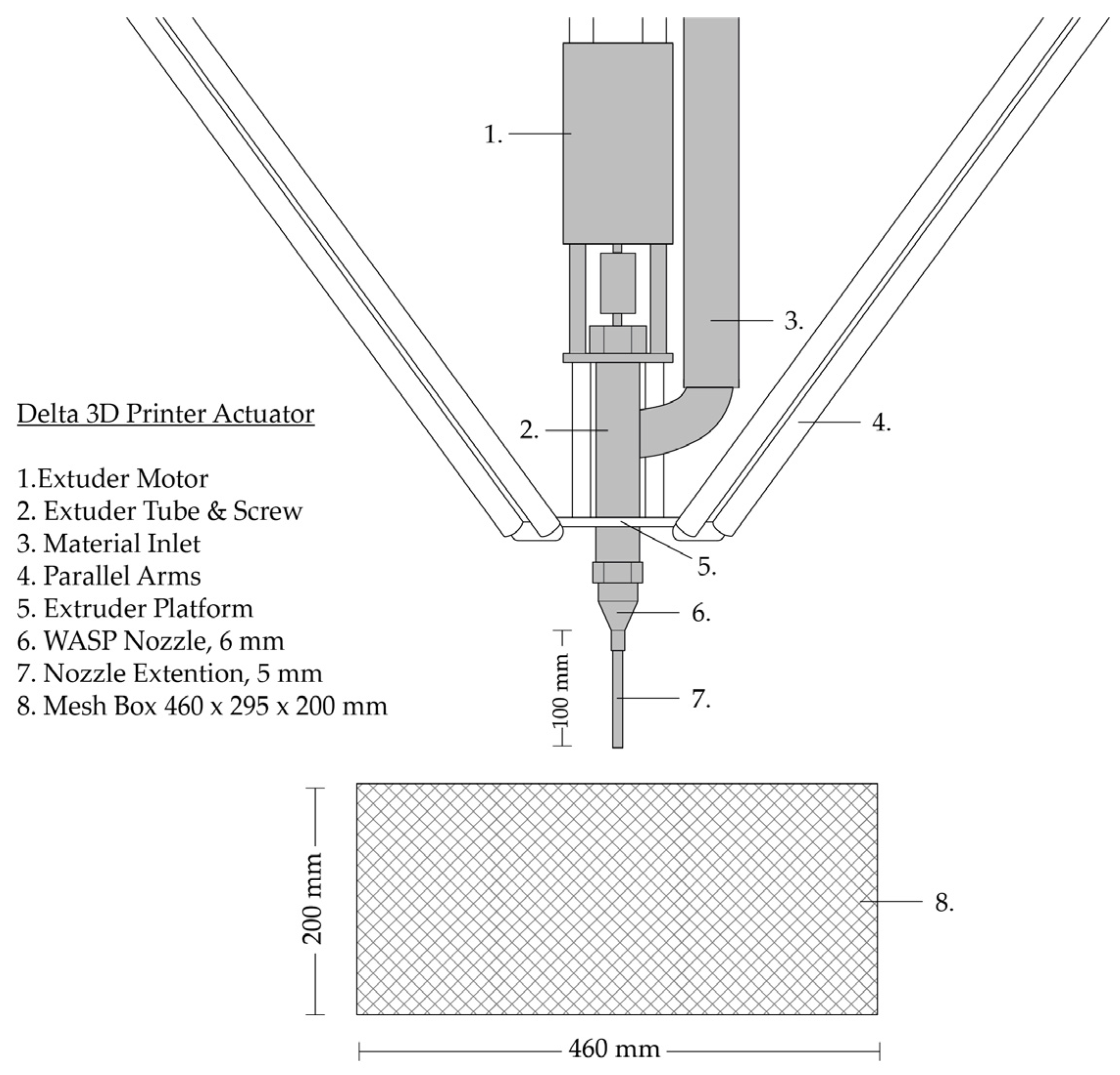

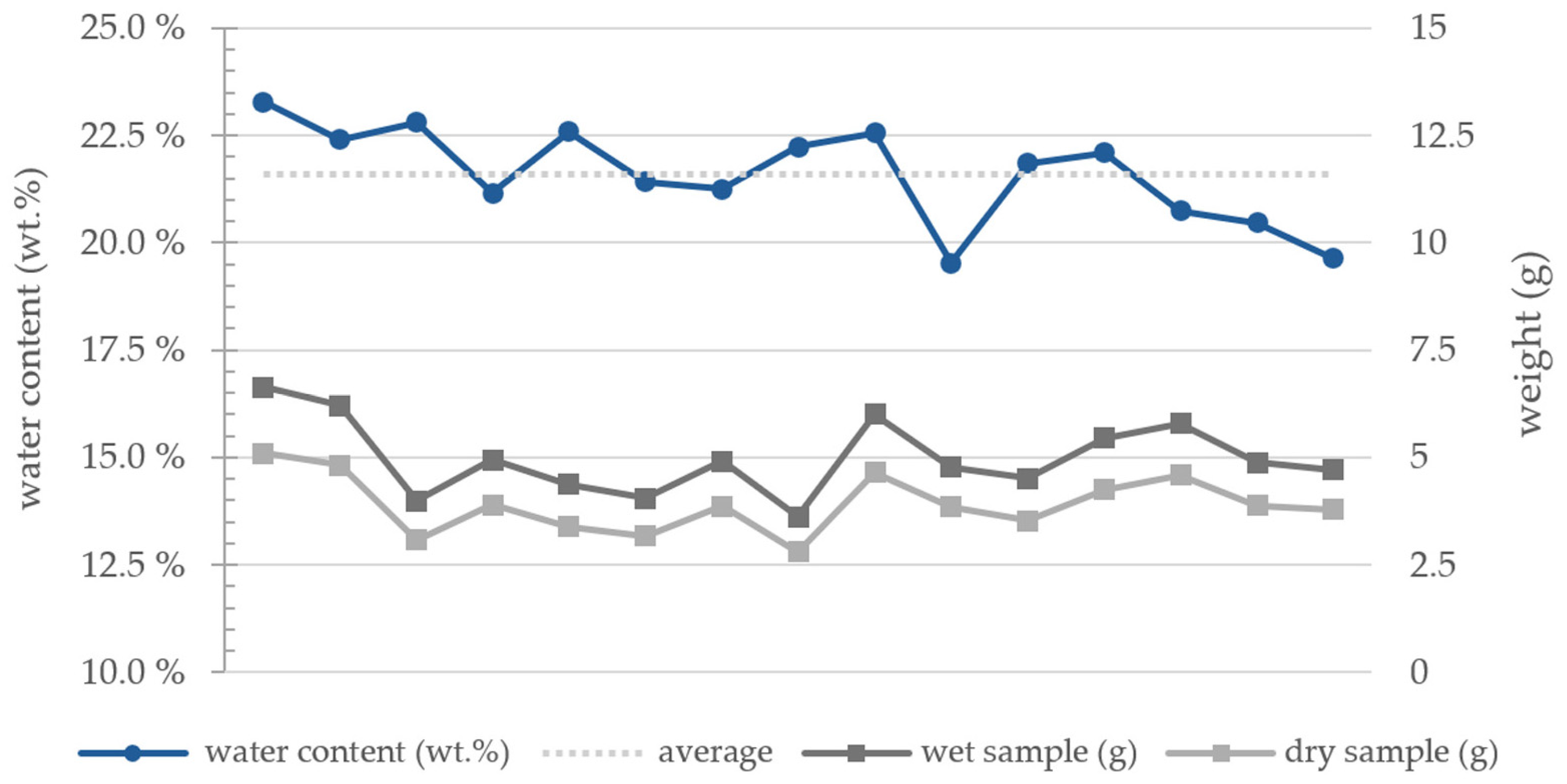
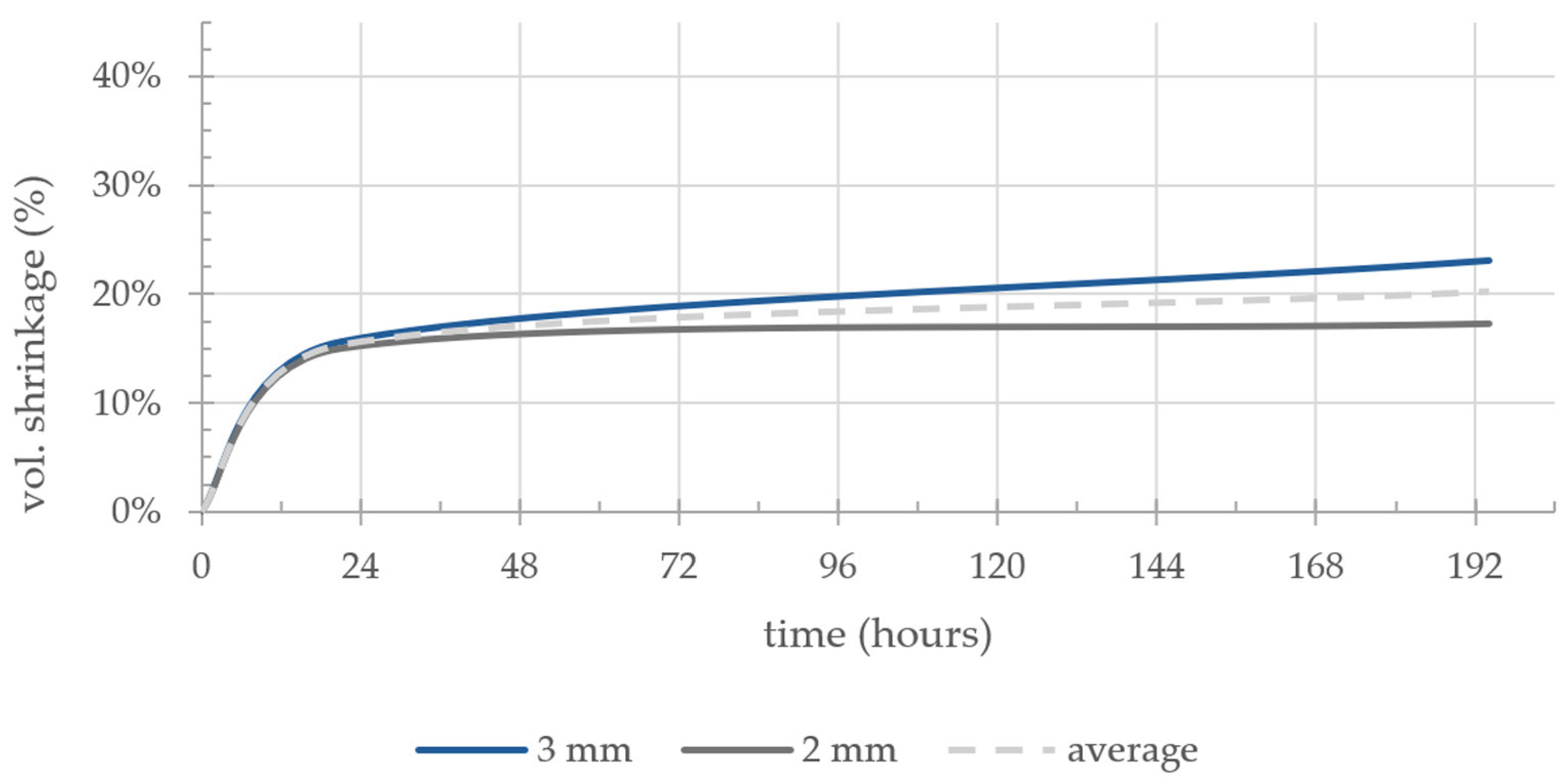
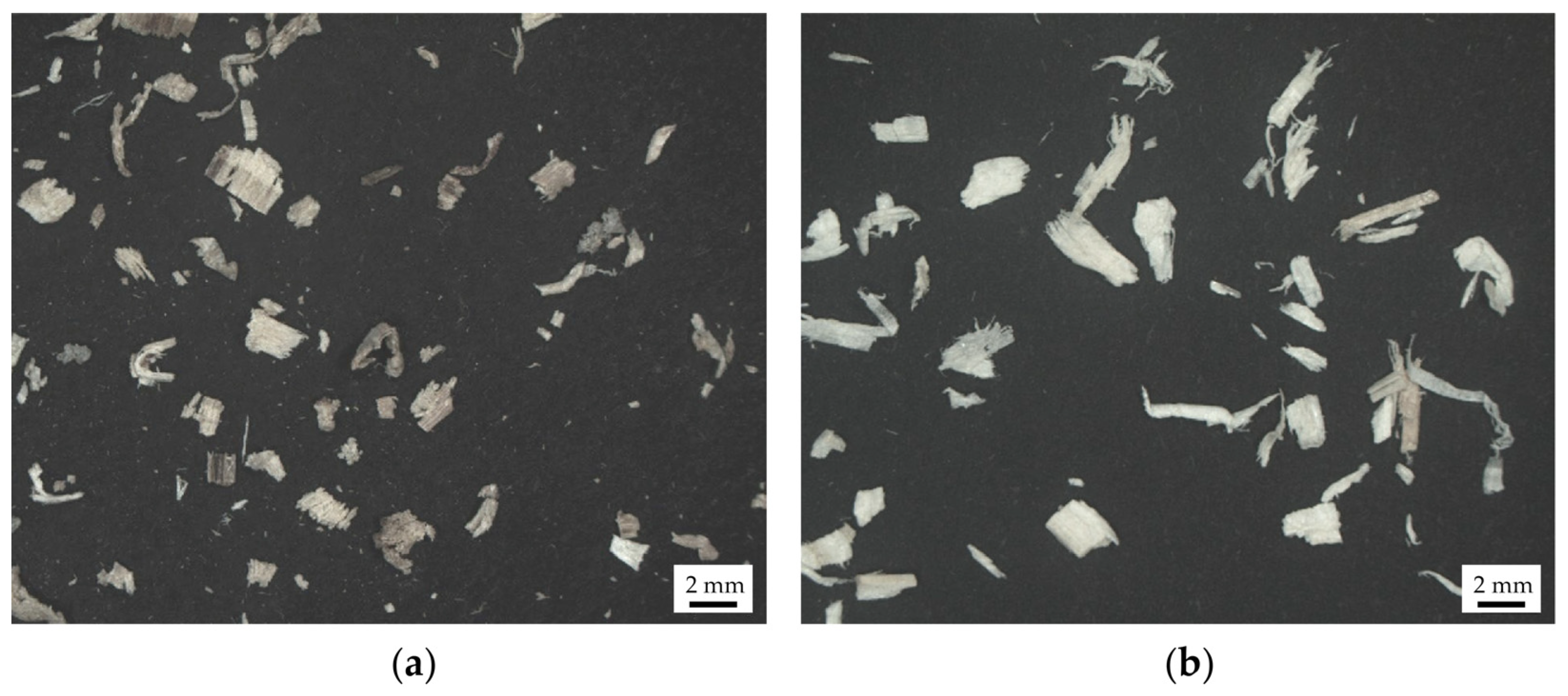


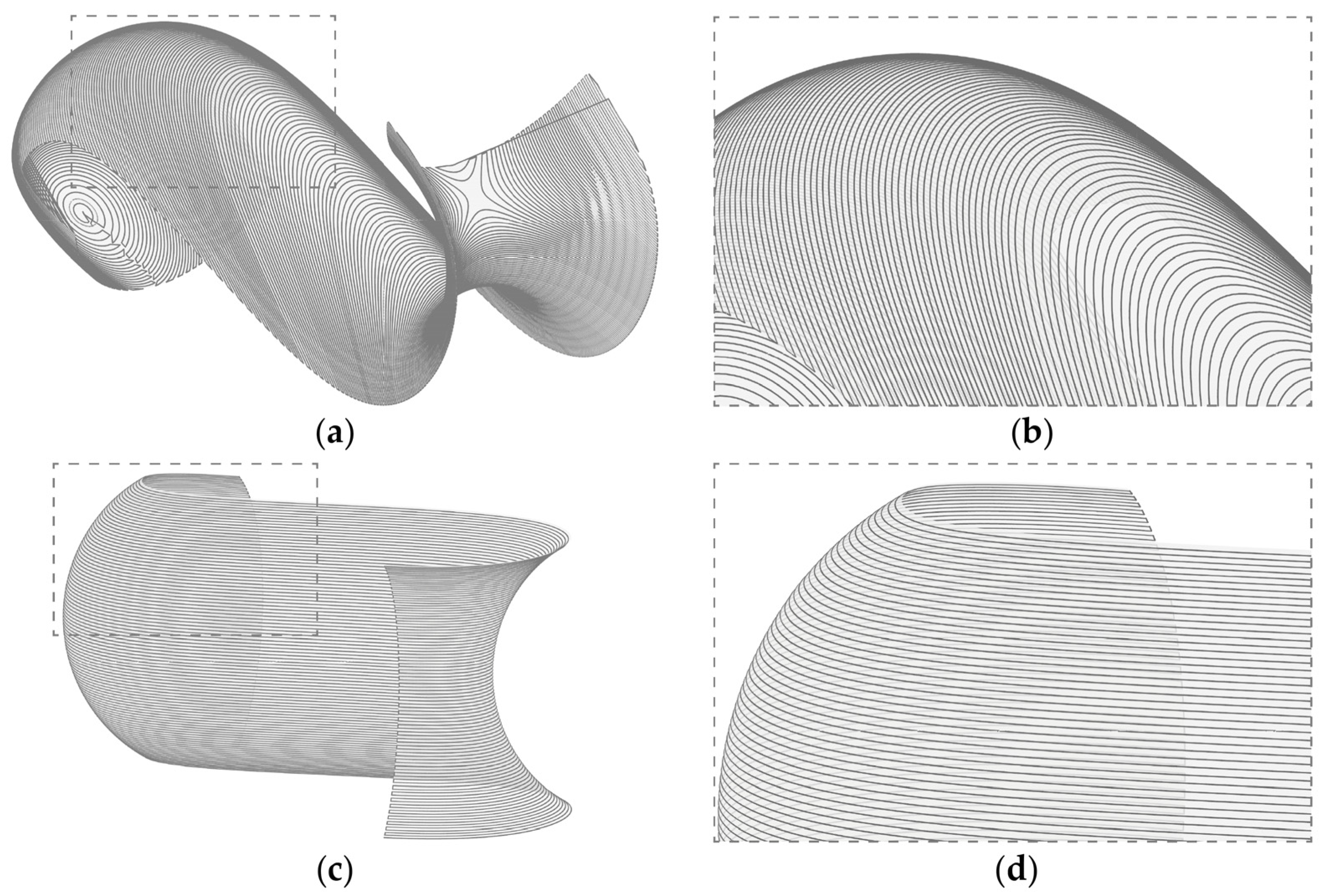

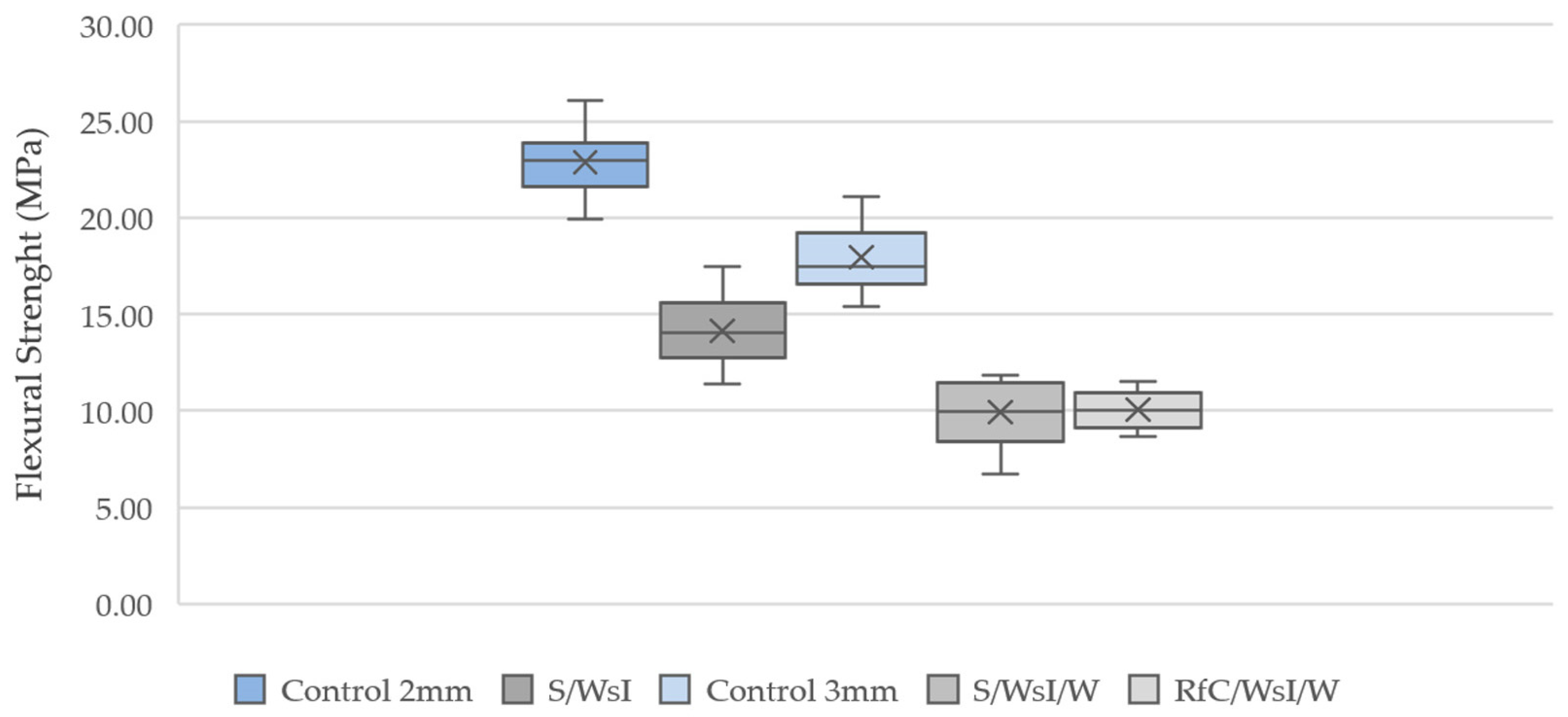
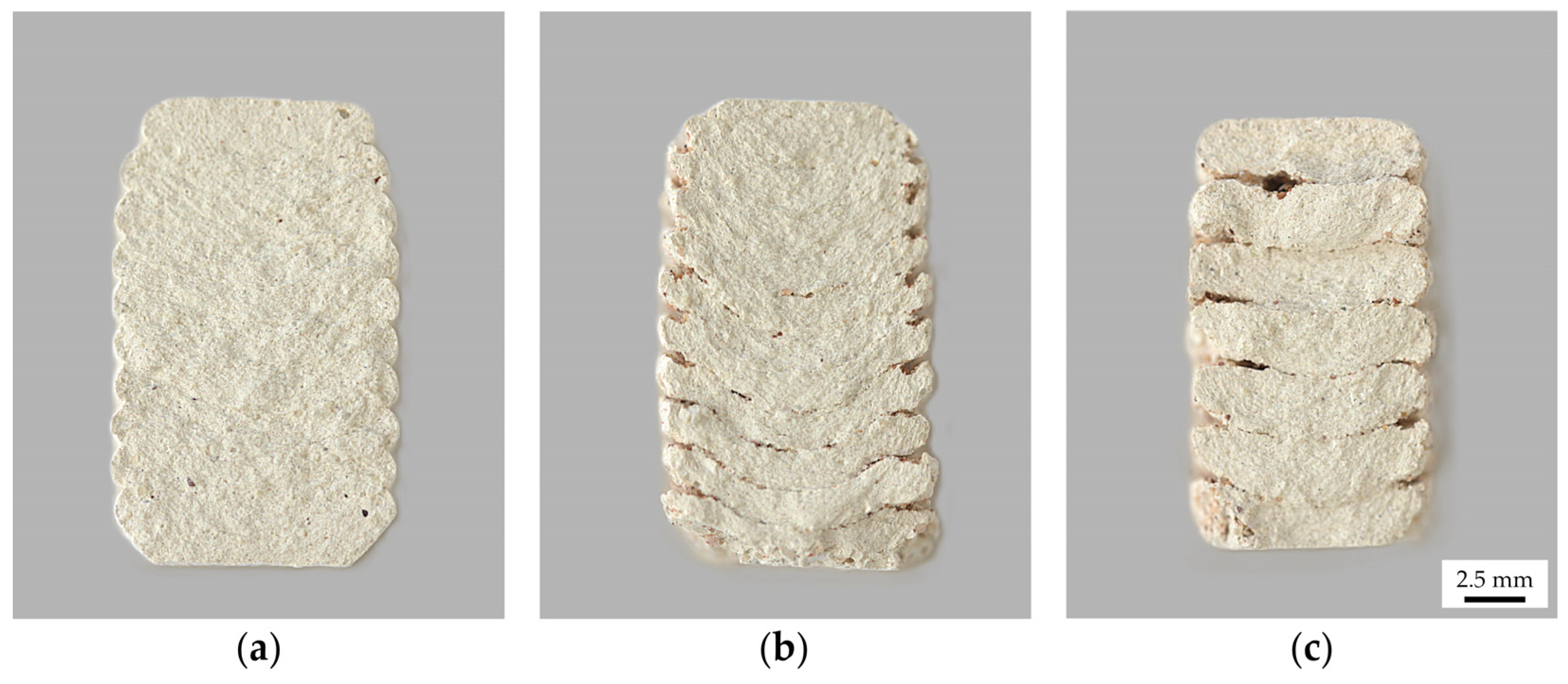

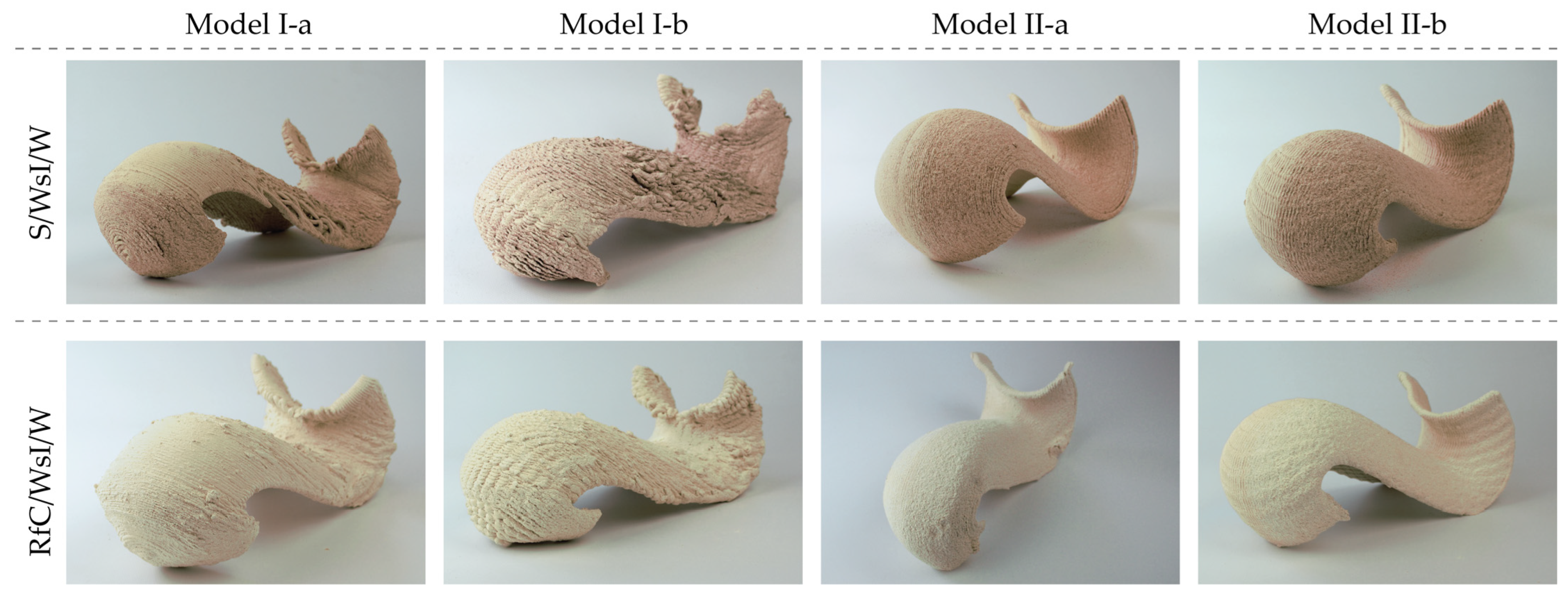

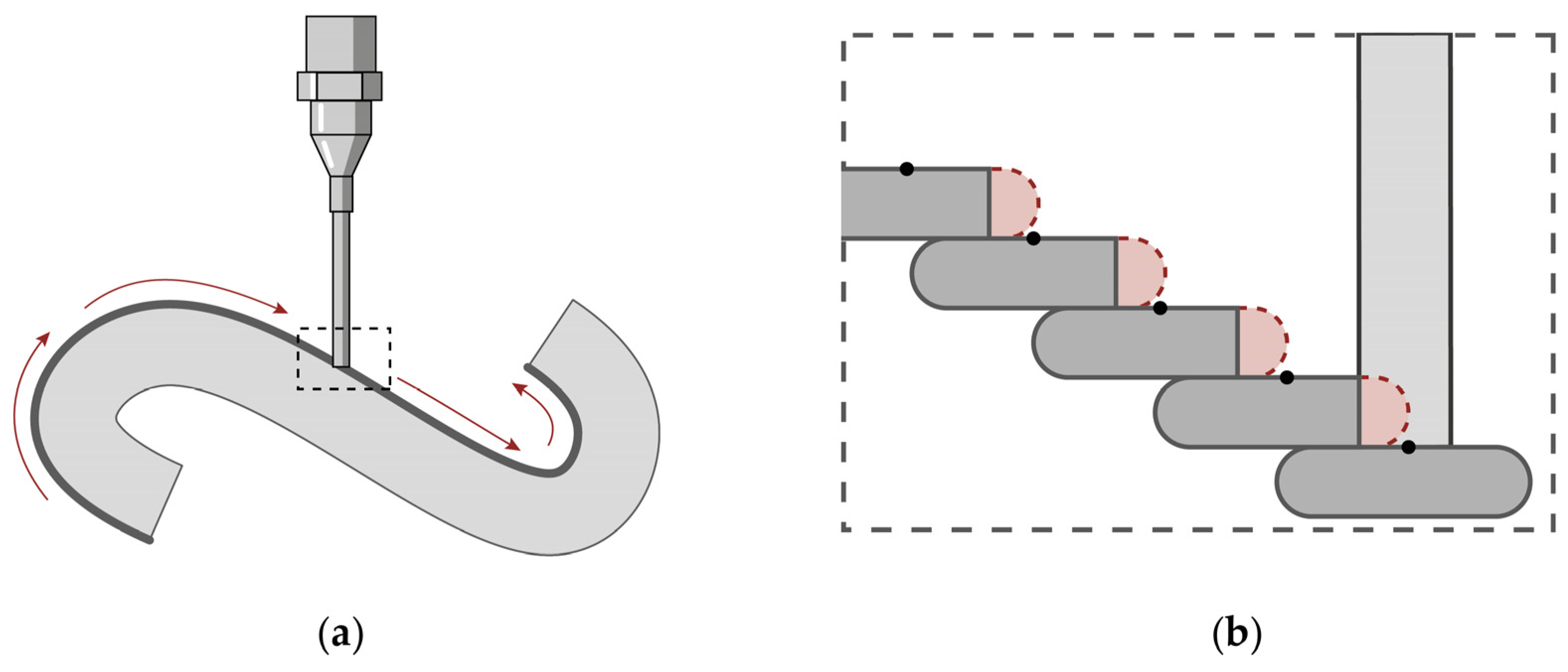

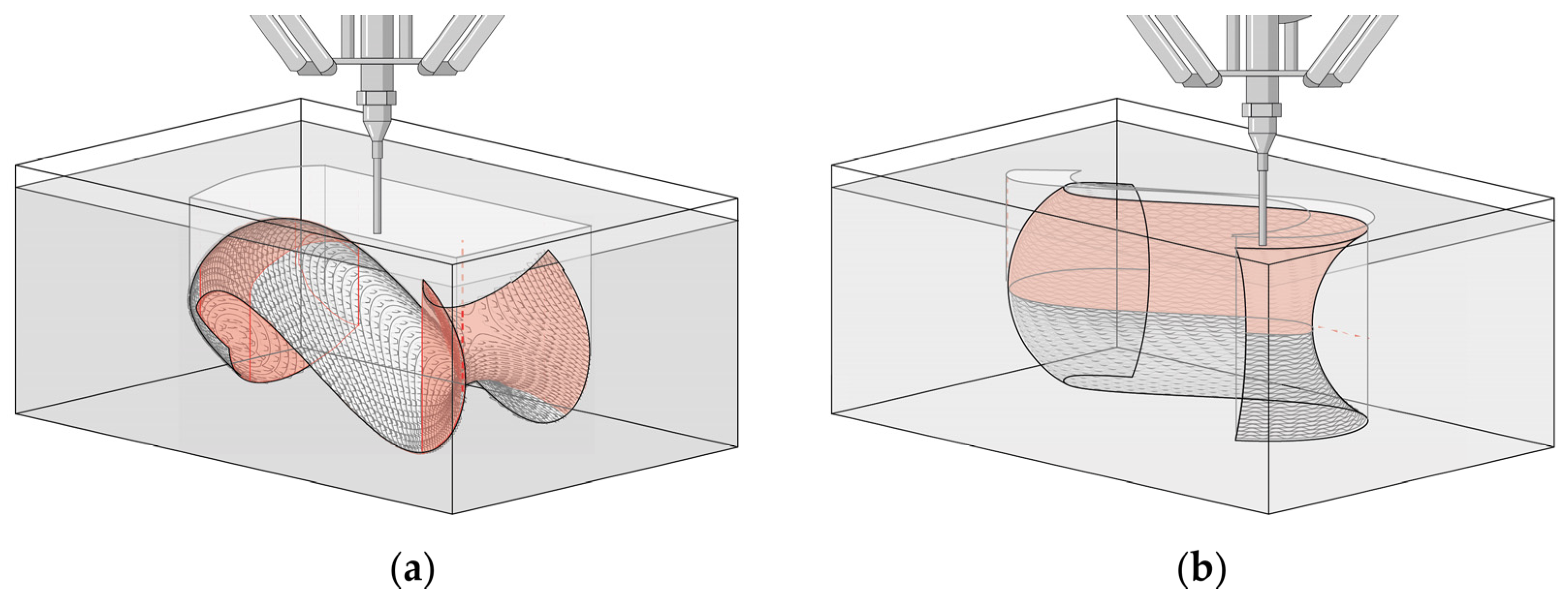
| Chemical Analysis | SiO2 | Al2O3 | Fe2O3 | TiO2 | CaO | MgO | K2O |
| 75.0% | 19.5% | 0.80% | 1.4% | 0.20% | 0.30% | 2.30% | |
| Moisture | 16.8 wt.% | ||||||
| Ingredients Mixture Code | Sand | Refractory Clay | Hardwood Shavings | Softwood Shavings | Cotton Flocks | Talcum Powder | Water |
|---|---|---|---|---|---|---|---|
| S | 1 | ||||||
| RfC | 1 | ||||||
| WsI | 1 | ||||||
| WsII | 1 | ||||||
| C | 1 | ||||||
| T | 1 | ||||||
| 2S/5WsI | 2 | 5 | |||||
| 2S/5WsII | 2 | 5 | |||||
| 3S/4WsI | 3 | 4 | |||||
| 3S/4WsII | 3 | 4 | |||||
| 5S/2WsI | 5 | 2 | |||||
| 5S/2WsII | 5 | 2 | |||||
| 3S/3WsI/C | 3 | 3 | 1 | ||||
| 3S/3WsII/C | 3 | 3 | 1 | ||||
| 3S/3WsI/T | 3 | 3 | 1 | ||||
| 3S/3WsII/T | 3 | 3 | 1 | ||||
| 3S/3WsI/W | 3 | 3 | 1 | ||||
| 3S/3WsII/W | 3 | 3 | 1 | ||||
| 3RfC/4WsI | 3 | 4 | |||||
| 3RfC/4WsII | 3 | 4 |
| Mixture Code | Volume % at: | Water Absorption % | Angle of Repose | |
|---|---|---|---|---|
| 1 kN | 20 kN | |||
| S | 100.00% | 91.49% | 26.37% | 31.83° |
| RfC | 83.33% | 74.07% | 29.80% | 33.65° |
| WsI | 56.62% | 23.99% | 49.33° | |
| WsII | 51.76% | 15.71% | 50.31° | |
| Cf | 38.39% | 17.27% | ||
| T | 62.63% | 32.91% | ||
| 2S/5WsI | 73.39% | 44.03% | ||
| 2S/5WsII | 70.77% | 44.08% | ||
| 3S/4WsI * | 81.47% | 53.97% | 79.89% | 36.53° |
| 3S/4WsII * | 75.39% | 54.32% | 56.95% | 40.47° |
| 5S/2WsI | 94.24% | 75.39% | ||
| 5S/2WsII | 91.65% | 74.25% | ||
| 3S/3WsI/C | 75.37% | 52.02% | ||
| 3S/3WsII/C * | 77.20% | 52.26% | 57.19% | |
| 3S/3WsI/T | 78.74% | 59.06% | ||
| 3S/3WsII/T * | 70.95% | 54.32% | 50.17% | |
| 3S/3WsI/W * | 60.91% | 38.92% | 47.73° | |
| 3S/3WsII/W | 54.37% | 35.65% | ||
| 3RfC/4WsI * | 82.12% | 53.01% | 40.02° | |
| 3RfC/4WsII | 78.23% | 53.29% | ||
| 3RfC/3WsI/W * | 46.36° | |||
| Model | Geometry | Dimensions L × W × H (mm) | Rotation of Slicing Planes | Layer Distance (mm) |
|---|---|---|---|---|
| Model I-a | S-horizontal | 345 × 160 × 145 | −45° | 0.75–1.50 |
| Model II-a | S-on side | 345 × 145 × 160 | 0° | 1.00–2.00 |
| Model I-b | S-horizontal + undulations * | 345 × 160 × 145 | −45° | 1.50 |
| Model II-b | S-on side + undulations * | 345 × 145 × 160 | 0° | 1.00–2.00 |
| Group | Layer Height | Failure Rate |
|---|---|---|
| Control | 3 mm | 0% |
| S/WsI | 3 mm | 100% |
| RfC/WsI | 3 mm | 100% |
| S/WsI/W | 3 mm | 33% |
| RfC/WsI/W | 3 mm | 73% |
| Control | 2 mm | 0% |
| S/WsI | 2 mm | 0% |
Disclaimer/Publisher’s Note: The statements, opinions and data contained in all publications are solely those of the individual author(s) and contributor(s) and not of MDPI and/or the editor(s). MDPI and/or the editor(s) disclaim responsibility for any injury to people or property resulting from any ideas, methods, instructions or products referred to in the content. |
© 2024 by the authors. Licensee MDPI, Basel, Switzerland. This article is an open access article distributed under the terms and conditions of the Creative Commons Attribution (CC BY) license (https://creativecommons.org/licenses/by/4.0/).
Share and Cite
Tabakova, V.; Klug, C.; Schmitz, T.H. Injection 3D Printing of Doubly Curved Ceramic Shells in Non-Synthetic Particle Suspensions. Materials 2024, 17, 3955. https://doi.org/10.3390/ma17163955
Tabakova V, Klug C, Schmitz TH. Injection 3D Printing of Doubly Curved Ceramic Shells in Non-Synthetic Particle Suspensions. Materials. 2024; 17(16):3955. https://doi.org/10.3390/ma17163955
Chicago/Turabian StyleTabakova, Vesela, Christina Klug, and Thomas H. Schmitz. 2024. "Injection 3D Printing of Doubly Curved Ceramic Shells in Non-Synthetic Particle Suspensions" Materials 17, no. 16: 3955. https://doi.org/10.3390/ma17163955
APA StyleTabakova, V., Klug, C., & Schmitz, T. H. (2024). Injection 3D Printing of Doubly Curved Ceramic Shells in Non-Synthetic Particle Suspensions. Materials, 17(16), 3955. https://doi.org/10.3390/ma17163955






